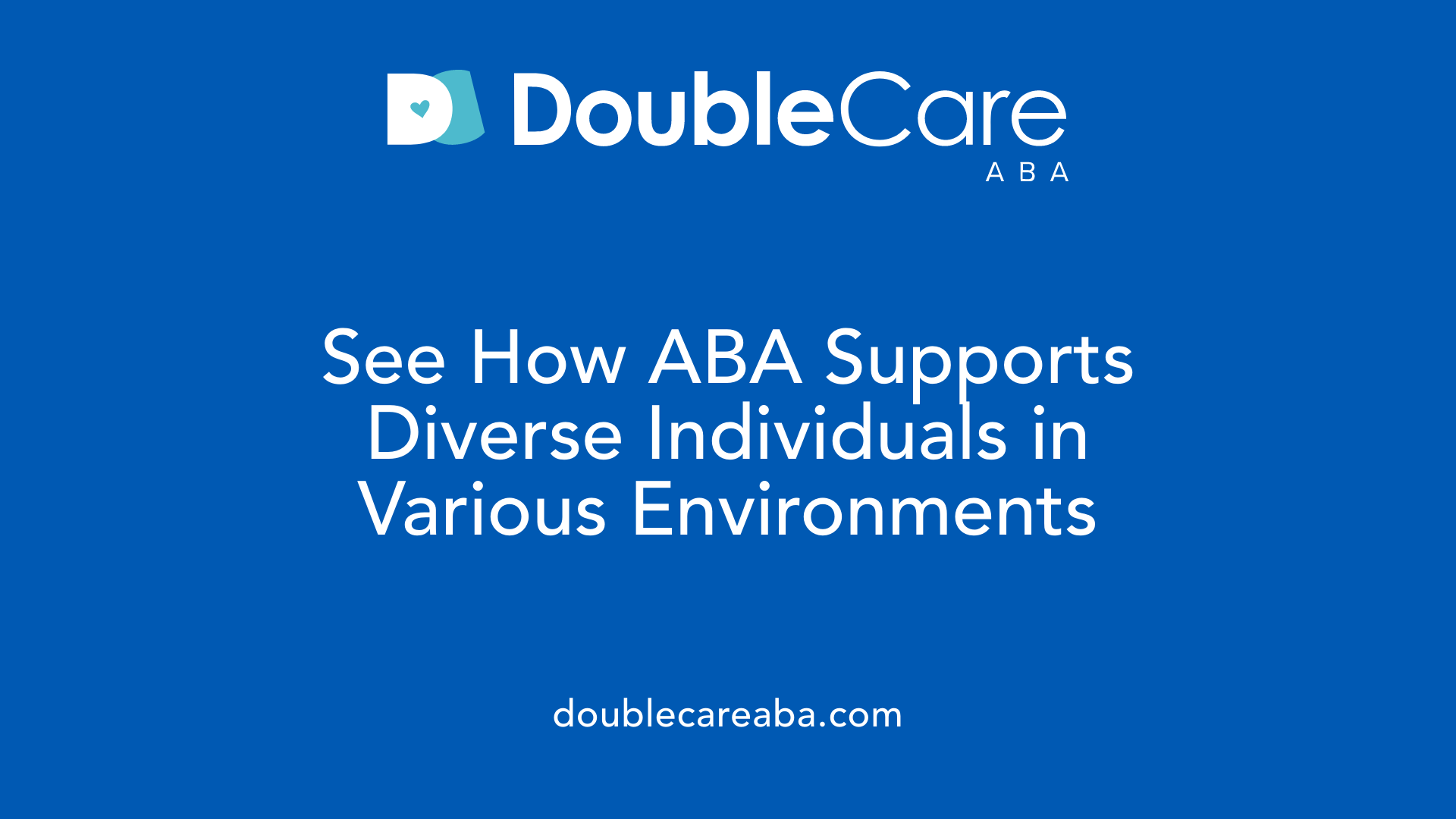What Is An Applied Behavior Analyst
Unlocking the Science of Behavior: The Role of the Applied Behavior Analyst

Understanding the Foundation of Behavior Change
Applied Behavior Analysis (ABA) is a scientifically grounded approach that focuses on understanding how behaviors work and how they can be modified through environmental adjustments and reinforcement strategies. This field examines the relationship between environmental stimuli and human actions, using data-driven methods to promote meaningful behavioral change across various populations and settings.
Defining the Role of an Applied Behavior Analyst
What is an applied behavior analyst?
An applied behavior analyst (ABA) is a specialized professional trained in the science of learning and behavior. They utilize principles such as reinforcement and the ABC (antecedent-behavior-consequence) model to understand, assess, and modify human behaviors. Their goal is to develop tailored, evidence-based intervention programs that help individuals acquire new skills, enhance communication and social abilities, and decrease problematic behaviors.
ABA practitioners include professionals like Board Certified Behavior Analysts (BCBAs) and registered behavior technicians (RBTs). They work across diverse environments such as clinics, schools, homes, and community settings.
Their work involves systematic data collection, continuous assessment, and regular program adjustments to achieve the best outcomes.
Although ABA is most commonly associated with autism treatment, its techniques are also applied in areas like education, animal training, organizational behavior, and health services, making it a versatile approach in promoting positive behavioral change.
Core Principles and Techniques of ABA
 Applied Behavior Analysis (ABA) is built on scientific principles that influence how behaviors are learned and maintained. Central to ABA are concepts like reinforcement, punishment, and the ABC model, which helps understand the environmental factors affecting behavior.
Applied Behavior Analysis (ABA) is built on scientific principles that influence how behaviors are learned and maintained. Central to ABA are concepts like reinforcement, punishment, and the ABC model, which helps understand the environmental factors affecting behavior.
Reinforcement, both positive and negative, plays a vital role. In positive reinforcement, desired behaviors are followed by rewards, increasing the likelihood that these behaviors will recur. Negative reinforcement involves removing an adverse stimulus when a desired behavior occurs. Conversely, punishment aims to decrease unwanted behaviors, either by applying an unpleasant consequence or removing a pleasant one.
The ABC model — Antecedent, Behavior, Consequence — is a foundational assessment tool. It helps behavior analysts identify what triggers a behavior (antecedent), the behavior itself, and what follows, allowing tailored strategies for behavior change.
ABA practitioners employ a variety of evidence-based techniques. Discrete Trial Training (DTT), a structured method, involves breaking skills into small, manageable steps and reinforcing correct responses. Promoting learning using prompting—guiding the individual to perform a desired response—and fading—gradually reducing prompts—is common. Behavior chaining teaches complex tasks by linking simple behaviors in sequence, either forward or backward.
Assessment methods in ABA include direct observation, structured interviews, standardized testing, and ongoing data collection. Data is meticulously recorded during interventions to monitor progress and adjust strategies as needed.
Other techniques include modeling behaviors for imitation, utilizing visual supports like Picture Exchange Communication System (PECS), and implementing behavior contracts or redirection to guide responses. Extinction, which involves withholding reinforcement to decrease problematic behaviors, is also used carefully, always within ethical guidelines.
Overall, ABA combines these strategies within a flexible framework, continuously measuring progress through data collection to personalize interventions and maximize skill development and behavior improvements.
Applications and Impact of ABA Therapy

What are the applications and benefits of ABA therapy?
Applied Behavior Analysis (ABA) has a broad range of applications, with its most prominent use being in supporting children with autism spectrum disorder (ASD). However, its utility extends beyond autism to other developmental and behavioral challenges. The therapy focuses on developing critical skills such as communication — enabling children to express their needs and desires more effectively.
Social skills are another major area of focus, helping children learn to interact positively with peers and adults. Daily living skills like self-care (e.g., brushing teeth, dressing), academic abilities, and motor skills are also targeted, promoting greater independence.
At the same time, ABA helps in reducing problematic behaviors such as self-injury, tantrums, or disruptive actions, which can interfere with learning and daily functioning. This reduction is achieved through techniques like positive reinforcement, which encourages desired behaviors, and systematic environmental modifications.
The benefits of ABA are well-supported by research, with many studies showing significant improvements in language development, social interaction, and self-control. Early, intensive interventions — often involving 25–40 hours of therapy weekly over the course of 1 to 3 years — can yield substantial developmental gains.
Long-term outcomes include increased independence, better social integration, and enhanced quality of life. These improvements extend beyond individual benefits, contributing positively to societal outcomes such as improved employment prospects and community participation.
Importantly, ABA is a collaborative effort involving families, teachers, and other professionals. This teamwork promotes the generalization of skills across different settings, which is crucial for lasting change. Overall, ABA’s adaptable, evidence-based approach makes it a powerful tool in behavioral and developmental support, fostering meaningful, sustained improvements that help individuals lead more fulfilling lives.
Populations Served and Settings of ABA
 Applied Behavior Analysis (ABA) serves a broad spectrum of populations across many different environments. Its primary application is for children and adults with autism spectrum disorder (ASD), where it aims to develop communication skills, social interactions, and self-care, while also reducing challenging behaviors such as self-injury or tantrums.
Applied Behavior Analysis (ABA) serves a broad spectrum of populations across many different environments. Its primary application is for children and adults with autism spectrum disorder (ASD), where it aims to develop communication skills, social interactions, and self-care, while also reducing challenging behaviors such as self-injury or tantrums.
In addition to autism, ABA is effectively used for individuals with other developmental disabilities, attention-deficit/hyperactivity disorder (ADHD), anxiety disorders, obsessive-compulsive disorder (OCD), oppositional defiant disorder (ODD), post-traumatic stress disorder (PTSD), traumatic brain injuries, and cognitive decline associated with aging or dementia.
The therapy is adaptable to various settings, including in-home programs, schools, community centers, and clinical facilities. ABA practitioners often work directly within these environments, collaborating with families, educators, and healthcare providers to implement tailored interventions.
Age ranges vary widely, from young children in early intervention programs to teenagers and adults. There are also programs designed for older adults experiencing cognitive decline, demonstrating ABA’s versatility across the lifespan.
Within these settings, ABA techniques support skill development, promote independence, and improve overall quality of life. Whether in a family home, a classroom, a healthcare clinic, or community-based activities, ABA’s customizable approach ensures personalized support aligned with individual needs, functional goals, and environmental contexts.
Educational Pathways and Certification for ABA Professionals

How can one become an applied behavior analyst?
Becoming an applied behavior analyst involves a series of educational and professional steps. Initially, prospective professionals need to earn a bachelor’s degree in psychology, education, or related fields. However, for those pursuing certification as BCBAs, a master’s degree is typically required.
The master’s program should be in behavior analysis or a closely related discipline, ideally from an accredited institution that offers a Verified Course Sequence (VCS), ensuring coursework aligns with certification standards.
Graduates must then complete supervised fieldwork, accumulating between 1,500 to 2,000 hours. This experience can often be gained through employment, provided it is supervised by a qualified BCBA.
Upon fulfilling the coursework and supervised experience, candidates need to pass the BCBA certification exam, which generally includes 150 to 185 questions testing their knowledge of behavior analysis principles and practices.
Maintaining certification involves ongoing professional development, requiring around 32 hours of continuing education every renewal period, including specific ethics training. State licensure might also be necessary depending on the location of practice.
Staying current with practices, ethics, and standards in behavior analysis is crucial for ongoing professional competence and effective service delivery.
For further guidance, searching for pathways under terms like “Educational and certification pathways to become an ABA professional
The Significance of the ABA Profession

How does ABA contribute to individuals and society?
Applied Behavior Analysis (ABA) professionals make a profound difference in the lives of many, especially individuals with autism and other developmental challenges. Their work helps to develop crucial skills like communication, social interaction, self-care, and academic abilities, fostering independence and improving overall quality of life.
By addressing challenging behaviors and promoting positive actions, ABA not only supports personal growth but also reduces risks associated with harmful behaviors, making environments safer and more inclusive. This benefit extends beyond the individual to society by enhancing their ability to participate fully in community life.
Why is an evidence-based approach and ethical practice important?
The profession relies on scientifically validated techniques rooted in behaviorism, ensuring treatments are effective and respectful. Data collection and analysis guide each intervention, allowing practitioners to tailor strategies to individual needs while monitoring progress consistently.
Ethical standards emphasize respect, dignity, and the right to self-determination. Practitioners are committed to fostering autonomy and avoiding harmful practices, aligning with the core principles of beneficence and justice.
What is ABA's role in autism and broader developmental issues?
ABA is recognized as the most effective treatment for children with autism, helping them develop essential skills and lessen disruptive or dangerous behaviors. Its structured techniques and flexible methods enable personalized programs that adapt as individuals grow.
While most known for autism intervention, ABA's applications extend to managing behavioral issues in various settings, including clinics, schools, workplaces, and even in health and organizational management. This versatility highlights the profession’s broad societal impact.
The dedicated work of behavior analysts, including BCBAs and RBTs, ensures that intervention strategies are scientifically grounded, ethically responsible, and ultimately transformative for individuals and communities alike.
| Impact Area | Focus | Outcome |
|---|---|---|
| Personal Development | Communication, social skills, daily living | Independence, confidence |
| Societal Well-being | Safety, community participation | Inclusion, societal contributions |
| Ethical Practice | Data-driven, respectful interventions | Trust, efficacy |
| Broader Applications | Autism, behavioral challenges in various fields | Well-rounded support |
This comprehensive approach underscores the vital importance of ABA professionals in shaping a more inclusive and supportive society.
The Lifelong Impact of ABA Expertise
Applied Behavior Analysis is a vital, science-based discipline that profoundly improves lives by fostering skill development and reducing harmful behaviors. The profession of ABA offers diverse career opportunities, grounded in ethical principles and rigorous training, enabling practitioners to make meaningful differences in their clients’ lives across many environments. As research continues to support ABA’s effectiveness, the role of an applied behavior analyst remains essential to advancing individual and societal well-being.
References
- Applied Behavior Analysis (ABA) | Autism Speaks
- Applied behavior analysis - Wikipedia
- ABOUT BEHAVIOR ANALYSIS - BACB
- Applied Behavior Analysis (ABA) - Cleveland Clinic
- What is a Behavior Analyst and How Do You Become One?
- What is an Applied Behavior Analysis Degree?
- Applied Behavior Analysis: What Is It and How Does It Work? - WebMD
- Applied Behavior Analysis - DDS.CA.gov
- What is Applied Behavior Analysis in Psychology? - LSU Online
- Applied Behavior Analysis - Psychology Today
















